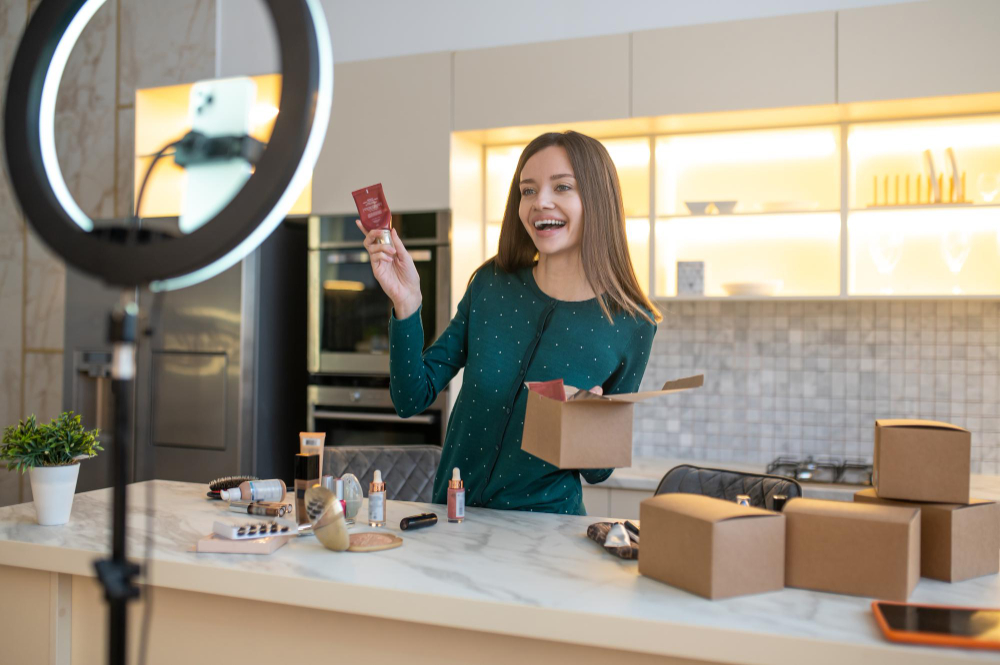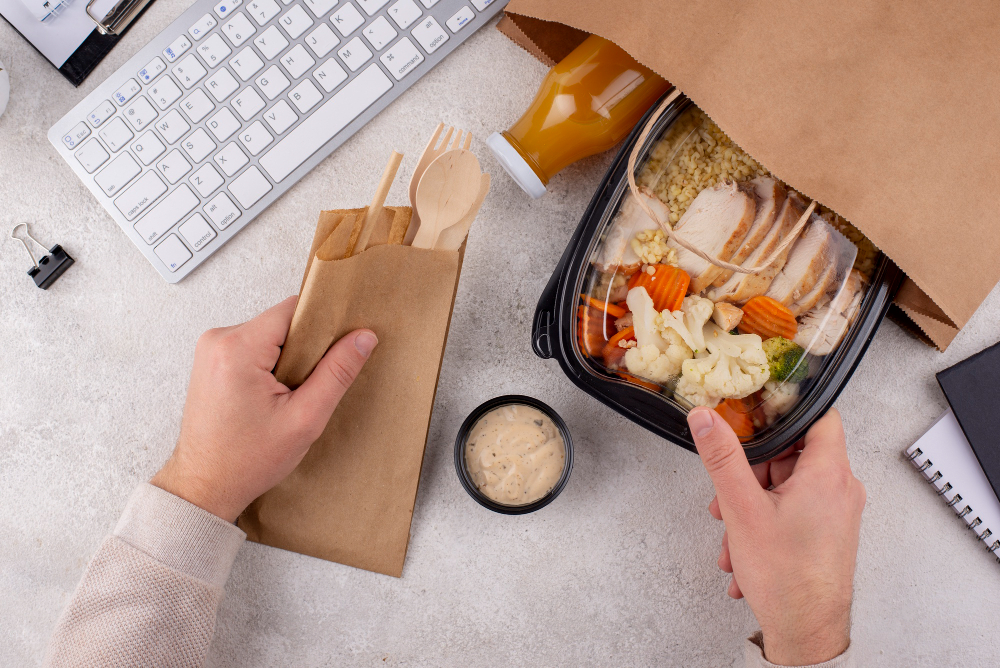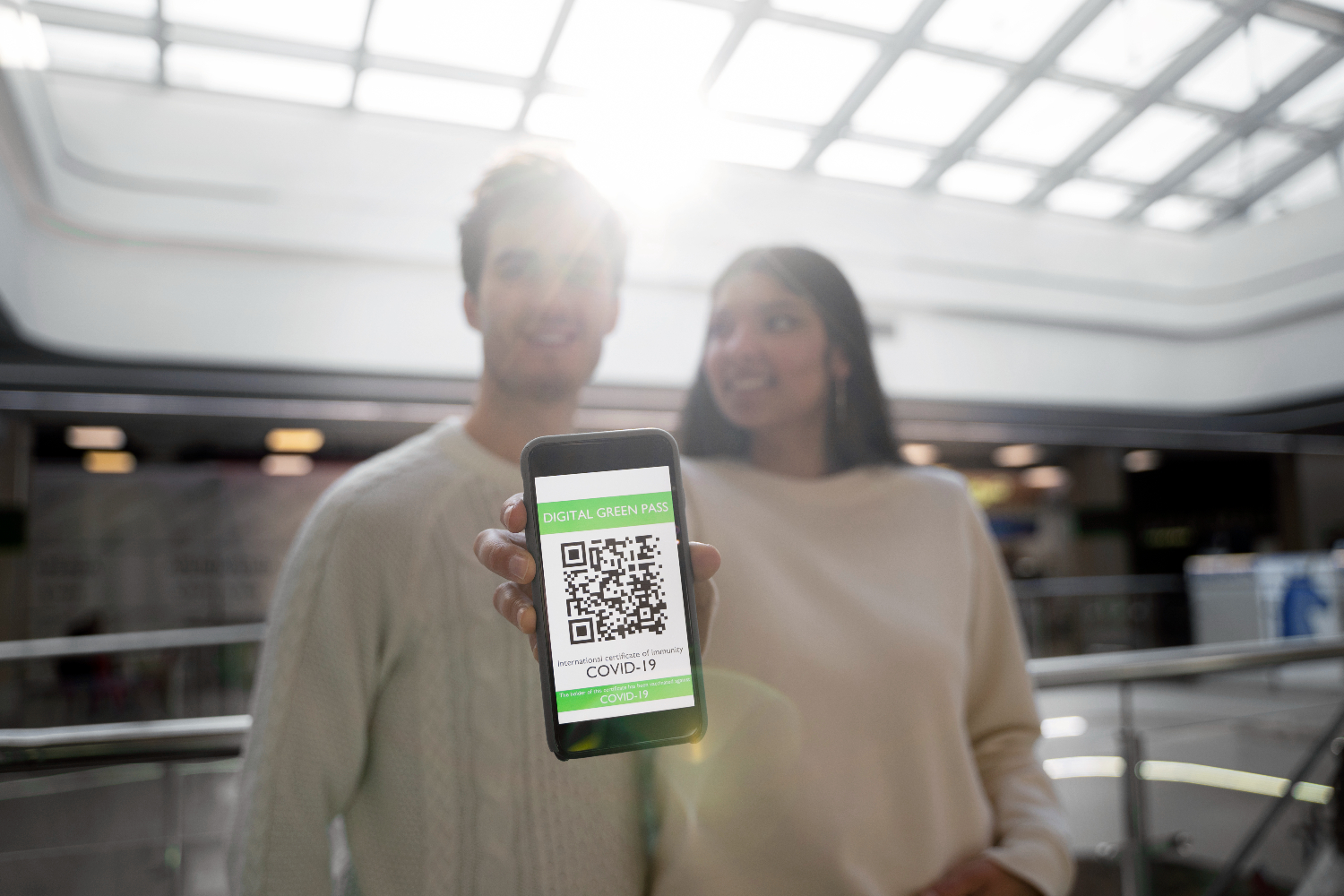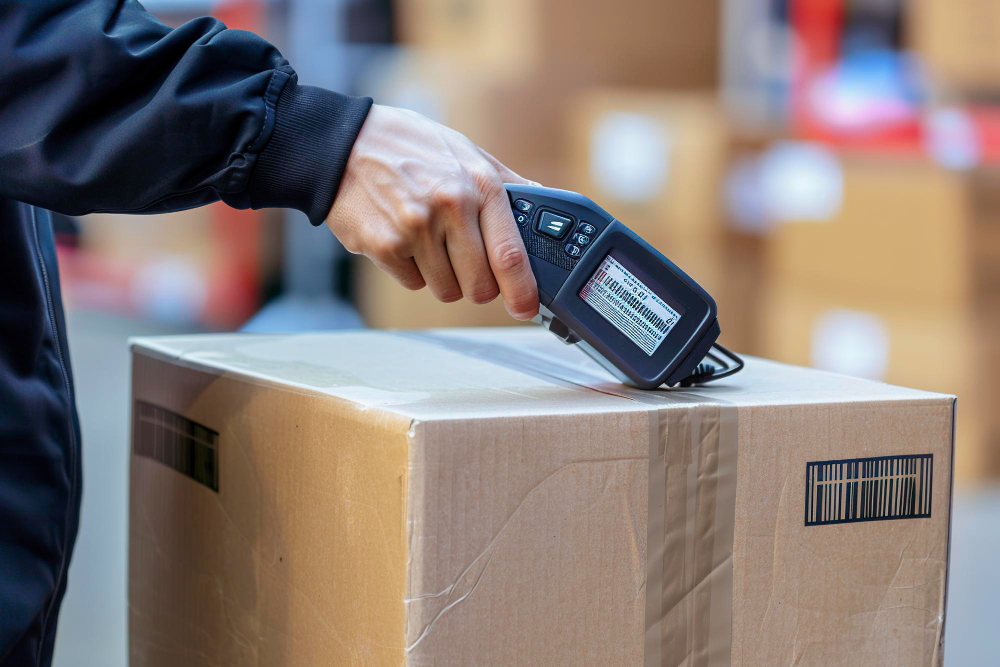Ever wondered how QR codes can enhance your product packaging? For manufacturers, these codes boost customer engagement, improve traceability, and support sustainability.
With a simple scan, customers can instantly access product details, user manuals, or special offers of any business type. This blog post explores the benefits of QR codes on packaging, shares examples, and provides tips for effective use.
Benefits of Using QR Codes for QR Code Product Packaging
QR codes on product packaging offer numerous advantages. They enhance customer engagement by linking to interactive digital content and ensure traceability with detailed product information. QR codes allow real-time updates and provide sustainability information for eco-friendly choices.
Additionally, they enable customization and personalization, offering tailored content to enhance the customer experience.
Enhanced Customer Engagement
QR codes on product packaging can significantly boost customer engagement by directing them to interactive digital content. Scanning the QR code gives customers access to instructional videos, detailed product information, user reviews, and augmented reality experiences. This enhances their experience with the product and fosters a deeper connection with the brand. By offering an interactive and informative journey, QR codes make the unboxing and usage process more enjoyable, leading to higher customer satisfaction and loyalty.
Traceability and Authenticity
QR codes on product packaging can revolutionize traceability and establish product authenticity. By linking the QR code to a digital product passport, you essentially create a virtual ID for your product. This passport can store a wealth of information about your product’s journey, including the origin of materials, manufacturing details, and anti-counterfeiting measures.
Real-time Updates
One significant advantage of incorporating QR codes into product packaging is the ability to provide real-time updates. Traditional printed information can quickly become outdated, but with QR codes, companies can easily update the content linked to the code without altering the packaging itself. This allows businesses to keep consumers informed about the latest product information, promotions, or any changes to the product details.
Sustainability Information
QR codes are a powerful tool for providing customers with detailed sustainability information, empowering them to make more eco-friendly choices. They allow customers to access comprehensive details about the product’s environmental impact throughout its lifecycle. This includes information about the materials used, the manufacturing process, and any eco-friendly certifications the product may have.
Furthermore, QR codes can provide recycling information, such as how to properly dispose of the product or packaging materials. This helps customers make informed decisions about recycling and waste management, contributing to a more sustainable future.
Customization and Personalization
QR codes offer a high degree of customization, allowing brands to tailor their codes to match their product packaging designs and marketing campaigns. This customization can include the incorporation of logos, brand colors, and unique patterns, ensuring that the QR codes seamlessly integrate into the overall packaging aesthetics.
Additionally, QR codes can be personalized to provide targeted content or promotions based on factors such as location, purchase history, or user preferences, enhancing the user experience and driving engagement.
Want to take your product packaging to the next level? At QR Stuff, we can help you unlock the potential of QR codes. From boosting customer engagement to promoting sustainability, QR codes offer a powerful tool to connect with your audience and create a more interactive and informative brand experience.
Let’s discuss how QR Stuff can help you implement a winning QR code strategy for your business. Contact us today!
Get started with QRStuff
Ready to discover how QR codes can transform your business?
Start by creating your custom QR Code today.
Examples of QR Codes for QR Code Product Packaging
Here are several practical applications of QR codes on product packaging. These examples demonstrate how QR codes can be used to enhance user experience, provide important information, and facilitate marketing efforts.
1. Nutritional Information
Nutritional Information QR codes are valuable beyond the food industry. They provide detailed data on ingredients, nutritional content, and allergy information. This application extends to sectors like pharmaceuticals, cosmetics, and supplements, where consumers seek comprehensive product details. QR codes can link to web pages or documents offering in-depth information, helping consumers make informed decisions.
2. User Manuals
QR code user manuals are a modern alternative to traditional printed manuals, offering numerous advantages. They are environmentally friendly, reducing paper waste and ink usage. Digital manuals can be easily updated, ensuring users always have the latest information. They provide greater convenience, as users can access them directly from their smartphone or tablet, eliminating the need for a physical booklet.
Additionally, digital manuals can offer interactive features such as video tutorials and hyperlinks, enhancing the user experience. For manufacturers, QR code manuals offer cost savings in printing and distribution and provide valuable data on user engagement to improve product design and support.
3. Promotional Campaigns
Promotional campaigns utilizing QR codes offer a direct and engaging way to connect consumers with exclusive online promotions, discounts, or loyalty programs. These QR codes can be strategically placed on product packaging, in-store displays, or marketing materials to drive customer engagement and boost your business sales.
By scanning the QR code, consumers can access a landing page or online form to redeem the offer or sign up for the loyalty program.
4. Product Authentication
Product authentication through QR codes provides a reliable method to verify the legitimacy of high-value items like luxury goods, ensuring customers receive genuine products. By scanning the QR code, customers can access a secure database that confirms the product’s authenticity, offering peace of mind and protection against counterfeit goods.
Furthermore, QR codes can serve as digital product passports, containing detailed information about the item’s origin, manufacturing process, and other relevant details, enhancing transparency and trust.
5. Customer Feedback
QR codes can be used to direct customers to feedback forms or surveys, enabling companies to gather valuable consumer insights. By scanning the QR code, customers can easily access a digital form where they can share their experiences, rate the product, and provide suggestions for improvement.
This real-time feedback helps companies identify strengths and areas for development, ultimately leading to enhanced product offerings and improved customer satisfaction.
Moreover, QR code-enabled feedback forms can increase response rates by providing a convenient and immediate way for customers to voice their opinions.
IMAGE
How to Create a QR Code for QR Code Product Packaging
Creating engaging and informative QR codes for your product packaging and marketing strategy is a breeze with QR Stuff! Our user-friendly platform streamlines the process, allowing you to design and customize QR codes that seamlessly integrate with your brand identity. Whether you’re looking to add interactive features or provide valuable product information to your packaging, we’ve got you covered.
1. Choose the Right QR Code Type
The type of QR code you choose will depend on the information you want to encode. Here are some common options:
- URL QR Code: This is the most popular type, ideal for directing users to a specific web page, such as your product page, a detailed instruction manual, or even a fun recipe video for food items.
- Contact Information QR Code: Instantly share your company’s contact details, including phone number, email address, or social media handles, with a single scan.
- Text QR Code: Encode a short message directly within the QR code, perfect for quick product descriptions, safety warnings, or unique product identifiers.
Taking it a Step Further: Digital Product Passports with QR Stuff
QR Stuff goes beyond basic QR codes. We can help you create QR codes that link to custom landing pages specifically designed for digital product passports (DPPs)! This allows you to showcase your commitment to sustainability and transparency by providing users with detailed information about your product’s lifecycle, materials, and responsible sourcing practices.
2. Create Your Own QR Code
Ready to get started? Here’s a step-by-step guide on generating a QR code using our user-friendly qr code generator platform:
- Head over to QR Stuff’s intuitive dashboard.
- Select the type of QR code you want to create from the available options mentioned above.
- Enter the relevant information based on your chosen type. For example, paste the URL you want to link to for a URL QR code or enter your contact details for a Contact Information QR Code.
- Customize your QR code! (We’ll get to this in more detail in the next section)
- Generate your QR code. QR Stuff will instantly create a high-quality QR code for you.
3. Personalize Your QR Code
Make your QR code stand out and reflect your brand identity with our extensive customization options! Here are some ways you can personalize your QR code:
- Brand Colors: Integrate your brand’s color scheme into the QR code for a cohesive look.
- Company Logo: Add your logo to the center of the QR code for instant brand recognition.
- Call to Action: Include a clear call-to-action text around the QR code, prompting users to scan and learn more.
- Design Elements: Get creative with different shapes, patterns, or even add an image overlay (use sparingly to avoid scanning issues) to make your QR code visually appealing.
4. Additional Customization Options (and Advanced Settings)
QR Stuff offers a range of additional features to tailor your QR code experience:
- Error Correction Levels: Choose the appropriate error correction level to ensure your QR code remains scannable even if it’s partially damaged.
- Dynamic vs. Static QR Codes: Decide between static QR codes (permanent data) or dynamic QR codes (data can be updated later) depending on your needs.
- Password Protection: Add an extra layer of security by password-protecting your QR code content (useful for exclusive content or promotions).
Remember, a clear and concise design is key for optimal scannability. Don’t overcrowd your QR code with too many design elements.
5. Test the QR Code
Before hitting print, it’s crucial to ensure your QR code functions properly. QR Stuff allows you to easily test your code across various devices (smartphones, tablets) and even simulate scanning under different lighting conditions.
6. Print Your QR Code
Now that you have a perfectly functional and customized QR code, it’s time to integrate it into your packaging design. Here are some best practices for printing:
- Use high-quality printing: This ensures the QR code remains crisp and clear, even on different packaging materials.
- Maintain a good size: The QR code should be large enough for users to scan easily, ideally at least 1 inch x 1 inch.
- Consider background contrast: Ensure there’s enough contrast between the QR code and the background for optimal scannability. Avoid placing it on busy patterns or reflective surfaces.
7. Track the QR Code Performance
QR Stuff provides valuable analytics tools to track the performance of your QR codes. Monitor how often your codes are scanned, where the scans are coming from, and even user demographics to gain valuable insights into customer engagement and optimize your future QR code campaigns.
IMAGE
Best Practices for Using QR Codes for QR Code Product Packaging
Using best practices for QR code implementation on product packaging is crucial to ensure they are effective and user-friendly. These guidelines will help maximize scan rates and enhance the overall consumer experience.
1. High-Contrast Design is King
QR codes rely on clear contrast between the code itself and the background for smartphones to scan them accurately.
- Avoid Blends: Don’t place your QR code on busy patterns or backgrounds with similar color tones.
- Dark on Light or Light on Dark: Generally, a dark code on a light background or vice versa works best.
- Test Thoroughly: Simulate lighting conditions (bright sunlight, store shelves) to ensure readability across environments.
2. Find the Scannable Sweet Spot
There’s a balancing act regarding QR code size on packaging.
- Too Small, No Scan: A code that’s too tiny becomes difficult for smartphone cameras to focus on. Aim for a minimum of 1 inch x 1 inch.
- Too Big, Not Appealing: An overly large QR code can overwhelm the packaging design. Consider the overall layout and maintain a visually pleasing size.
3. Clear Call to Action (CTA)
Don’t leave your customers guessing! Include a clear and concise Call to Action (CTA) beside the QR code. This text should tell them exactly what to expect when they scan:
- “Scan for Recipe Ideas!” (for food products)
- “Unlock Exclusive Discounts!” (for promotions)
- “Learn More About Sustainability Efforts” (for eco-conscious brands)
4. Durable Printing Makes a Difference
The last thing you want is a QR code that becomes unreadable halfway through the product’s lifespan.
- Choose High-Quality Printing: Opt for printing methods that ensure the QR code remains crisp and clear, even on textured surfaces.
- Scratch-Resistant Options: Consider using varnishes or laminates for additional protection, especially for products that might experience wear and tear.
5. Prioritize Placement
Where you put your QR code significantly impacts how many people will scan it. Here’s where to prioritize placement:
- Easy to Find: Position the QR code on a prominent, flat packaging surface, avoiding curves or edges.
- Early Access: Ideally, place the code on a part of the packaging users see readily, such as the front panel or a designated “QR Code” section.
- Consider Re-scans: If the QR code offers ongoing value (e.g., loyalty program enrollment), position it somewhere easily accessible after opening the product.
By following these best practices, you can transform your QR codes from mere pixels on a package into interactive gateways that enhance customer experience, brand engagement, and ultimately, drive sales.
At QR Stuff, we provide a user-friendly platform to create, customize, and track high-performance QR codes seamlessly integrated into your packaging design. Let us help you unlock the full potential of QR codes and transform your product packaging into an interactive and engaging brand experience.
Contact us today to discuss your QR code strategy!






Hilla Rosenberg,
Content Writer at QRStuff
Hilla is a seasoned content writer at QRStuff, passionate about making tech accessible and engaging. With a knack for breaking down complex topics, she helps businesses and individuals make the most of QR Code technology.